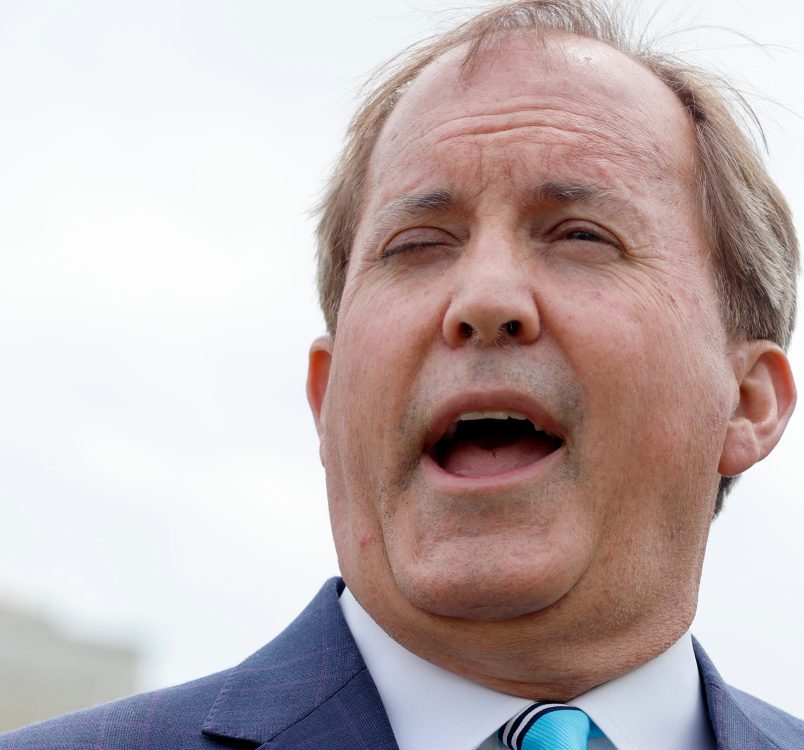President Donald Trump on Monday morning signed a new executive order temporarily barring travelers from a list of predominantly Muslim countries, replacing the widely-criticized order that he signed in January and that sparked nationwide protests.
The previous travel ban had been stayed in the courts, prompting the Trump administration to issue a new order rather than continue to fight for its previous one in court.
This replacement includes several substantive changes, including eliminating Iraq from the list of countries from which travelers will be banned. But the rollout of the new order was also handled in a drastically different manner, suggesting a different public relations strategy for Trump’s second swing at a travel ban.
Below are five key takeaways from the new order:
It was rolled out without much public fanfare
Trump signed the order in private on Monday, with the only image of the President signing it coming in a tweet from White House Press Secretary Sean Spicer:
.@POTUS has signed a new executive order that will keep the nation safe. Read it at https://t.co/XcBwwEJJHF pic.twitter.com/Yx2mikXl2A
— Sean Spicer (@PressSec) March 6, 2017
This stands in contrast to the very public rollout of the initial executive order in January. White House chief strategist Steve Bannon reportedly planned that order’s Friday rollout so that it would prompt protests and draw maximum attention over the following weekend.
The White House is not expected to hold a press briefing on camera Monday following the issuance of the replacement order, and Spicer is instead expected to talk with White House reporters behind closed doors.
It will not take effect immediately
The new executive order does not take effect until March 16. Previously, the administration argued its original immigration order needed to be rolled out immediately.
Defending the implementation of the initial order, Trump argued that if the administration had given people a heads up, “bad” travelers would have “rushed into our country” and threatened national security.
The signing of the replacement order had been reportedly delayed so that its signing would get its own news cycle, though, undermining the White House’s argument that travelers from the predominantly Muslim countries banned by the order pose an imminent threat. A federal court had placed the initial order on hold, allowing people from those countries to enter the United States.
Iraqis are now excluded from the travel ban
The new executive order only lists six countries from which certain travelers are banned from entering the United States. Iraq is no longer on the list of predominantly Muslim countries subject to the ban, but the new order does bar travelers from Iran, Libya, Somalia, Sudan, Syria and Yemen for 90 days.
The text of the new order describes Iraq as a “special case” because of the “the close cooperative relationship between the United States and the democratically elected Iraqi government, the strong United States diplomatic presence in Iraq, the significant presence of United States forces in Iraq, and Iraq’s commitment to combat ISIS justify different treatment for Iraq.” The replacement notes that since the initial executive order was issued in January, Iraq has taken steps to “enhance” its travel documents.
The new order also states that visas from Iraq will still be subject to additional scrutiny.
Green card holders are not targeted
The replacement order lays out specific groups that will be exempt from the travel ban, including green card holders.
The new ban explicitly excludes permanent residents of the U.S.; dual nationals who use a passport from a country not on the list of banned nations; travelers with certain diplomatic visas; those who have already been granted asylum; and refugees who have already been admitted to the U.S.
The new order also lays out a process for certain travelers, such as young children, those employed by the U.S. government, and those who have previously been admitted to the country, to apply for a waiver from the ban.
The Syrian refugee program was indefinitely suspended in the initial executive order. That is no longer the case; however, the replacement order still suspends the entire U.S. refugee program for 120 days.
The order contains language denying its predecessor discriminated against any religion
The replacement order includes a passage defending the initial executive order, claiming that the previous travel ban was not an attempt to discriminate.
“Executive Order 13769 did not provide a basis for discriminating for or against members of any particular religion,” the new order reads. “While that order allowed for prioritization of refugee claims from members of persecuted religious minority groups, that priority applied to refugees from every nation, including those in which Islam is a minority religion, and it applied to minority sects within a religion. That order was not motivated by animus toward any religion, but was instead intended to protect the ability of religious minorities — whoever they are and wherever they reside — to avail themselves of the USRAP in light of their particular challenges and circumstances.”






